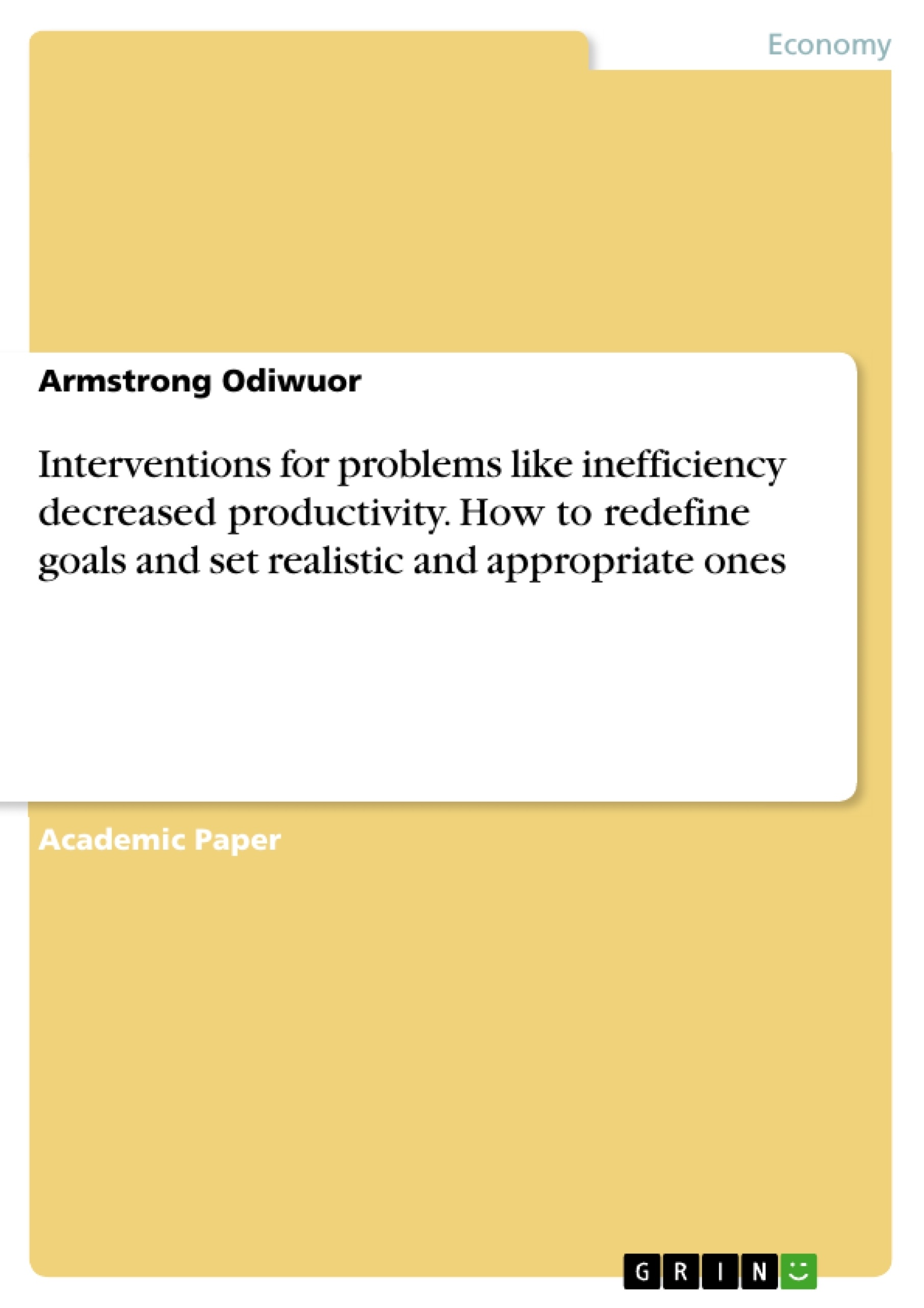A global research pioneer organization faces inefficiency and needs immediate intervention to get back on track. The organization's problems include ineffective data collection, employees working under pressure, inability to provide aid services, and decreased productivity. However, it has well-performing human resource management and a well-structured management system. As an internal consultant, I am charged with the responsibility to ensure I develop an intervention that will bring an immediate change that is warranted. This paper proposes that the most effective intervention would be for the company to redefine its goals and set realistic and appropriate ones.
Interventions for the Problems Company X Faces
Company X, a global research pioneer organization, faces inefficiency and need immediate intervention to get back on track. The organization's problems include ineffective data collection, employees working under pressure, inability to provide aid services, and decreased productivity. However, it has well-performing human resource management and a well-structured management system. As an internal consultant, I am charged with the responsibility to ensure I develop an intervention that will bring an immediate change that is warranted. This paper proposes that the most effective intervention would be for the company to redefine its goals and set realistic and appropriate ones.
The problems that X faces include issues of performance management. By looking at the specific problems, there seems to be a working environment in the organization that fails to allow employees to perform to the best of their abilities and produce the best results most efficiently and effectively. According to Armstrong (2021), performance management is a way an organization can get better results from its teams and individual employees by comprehending and managing performance within an agreed structure of planned goals, standards, and competence requirements. Poor performance management means that there exists inadequate involvement of the corporate management, which is one of the key determinants of the organization's success. The type of the proposed intervention is the whole organization in which every employee sets up realistic and appropriate goals that will be achievable with the available resources in the organization.
The Purpose of the Intervention
Locke's goal-setting theory can best explain the purpose of the intervention and how it can help solve the problems Company X faces and consequently bring positive change. The goal-setting theory is based on five principles: clarity, challenge, commitment, feedback, and task complexity (Locke & Latham, 2015). Relating to the theory, how Company X' newly established goals alongside feedback will be propelling factors to result in the needed change.
[...]
- Citation du texte
- Armstrong Odiwuor (Auteur), 2022, Interventions for problems like inefficiency decreased productivity. How to redefine goals and set realistic and appropriate ones, Munich, GRIN Verlag, https://www.grin.com/document/1235903




